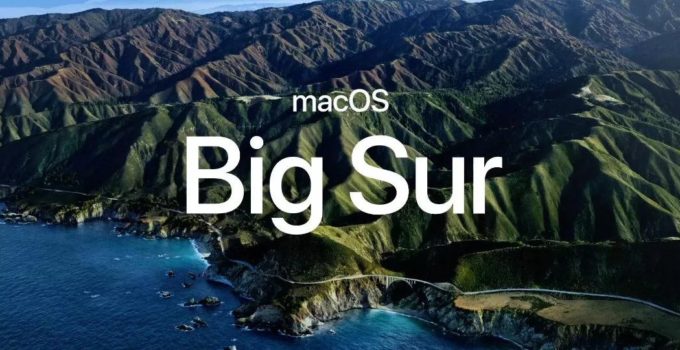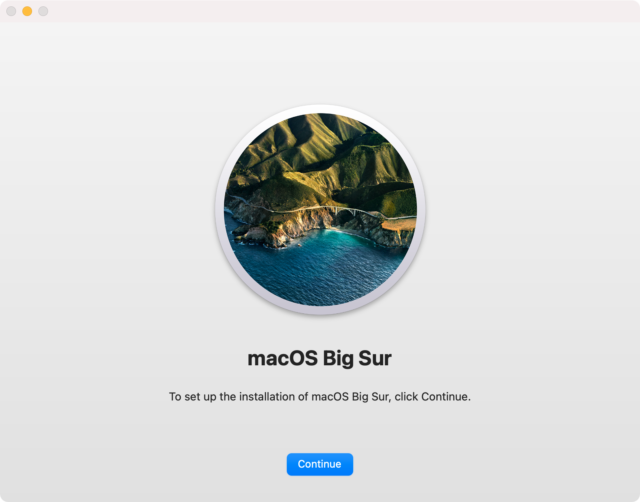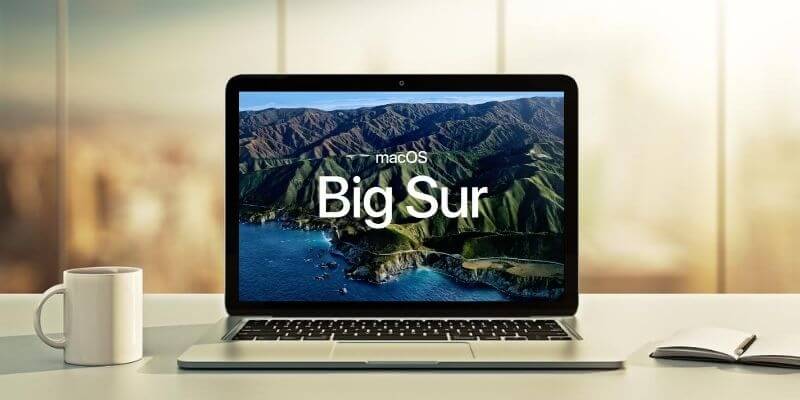Today I will show you how to Install macOS 11 Big Sur on an Unsupported Mac. To be clear this guide shows you how to install Mac OS Big Sur, it is up to you to backup your data first and use Big Sur at your own risk, I am not responsible for any loss of data etcFor me as you can see I installed Big Sur and it worked for me, however due to unforeseen circumstances I can’t help with all. To install Big Sur on an unsupported Mac, you must first create a bootable USB drive using a special patcher app. Then you need to use the USB drive to install Big Sur on the unsupported Mac, and, lastly, you must install the needed patches. Creating a bootable USB stick using the Big Sur patcher. A: If your Mac had official support in macOS Catalina, it will be able to be patched to run Big Sur with minimal issues. If your Mac was unsupported before the release of macOS Catalina, support. MacOS Big Sur 11 release date: 2020.11.12; Unsupported models and problems According to the summary of macrumors, unsupported Macs can be divided into several situations: Mac models that officially support macOS Catalina but are not supported by macOS Big Sur: – These Macs can run Big Sur normally, but Wi-Fi cannot work normally.
- The official version of macOS Big Sur is released
macOS Big Sur brings the combination of powerful strength and beautiful appearance to a new level. The carefully crafted new design allows you to fully experience the charm of the Mac; the Safari browser is ushered in a major update, waiting for you to enjoy; the map app and the information app are loaded with new functions for you to explore; more transparent privacy permissions, protection More thoughtful.
macOS Big Sur 11 release date: 2020.11.12 - Unsupported models and problems
According to the summary of macrumors, unsupported Macs can be divided into several situations:
Mac models that officially support macOS Catalina but are not supported by macOS Big Sur:
– These Macs can run Big Sur normally, but Wi-Fi cannot work normally. (This type of model is the easiest to run Big Sur perfectly through the patch, currently it is only a Wi-Fi problem.)
You can follow the steps below, this article is mainly for this type of model.
2012 and Early 2013 MacBook Pro
Not officially supported in macOS Catalina, but are fully capable of running both Catalina and large Sur with a Metal-compatible GPU and upgraded Wifi/BT card. Mac can be patched to run macOS Catalina normally, and it may be patched to run macOS Big Sur: – These Macs can currently launch Big Sur, but there is currently no Wifi or graphics acceleration support. This type of model requires additional steps to solve installation problems. Early-2008 or newer Mac Pro, iMac, or MacBook Pro: MacPro3,1
Macmini5,x (systems with AMD Radeon HD 6xxx series GPUs were almost unusable when running Catalina and will be under Big Sur as well.)
MacBook5,2
Xserve3,1*
*Not officially supported in macOS Catalina, but are fully capable of running both Catalina and large Sur with a Metal-compatible GPU and upgraded Wifi/BT card.
Completely unsupported Mac:
This type of model does not need to consider installing Big Sur.
Macmini2,1
— The 2007 iMac 7,1 is compatible with Catalina and potentially Big Sur if the CPU is upgraded to a Penryn-based Core 2 Duo, like a T9300.
2006-2008 MacBooks:
MacBook4,1 (as with Mojave and Catalina, we’ll get on our own here, but Big Sur are going to be running on this machine!)
2008 MacBook Air (MacBookAir 1,1)
All PowerPC-based Macs
All 68k-based Macs - Download macOS Big Sur
Mac App Store
Open the App Store and directly search for macOS to download.
After the download is complete, you can see that Install macOS Big Sur is located in the application (Application) directory.
Baidu SkyDrive DMG Mirror
Please visit: https://sysin.org/article/macOS-Big-Sur/
After downloading, double-click to open the dmg file, and drag Install macOS Big Sur to the application (Application). - Patch Tool Download
(1) Hax.dylib: link 1
(2) big-sur-micropatcher - Installation method: new installation or upgrade installation under the current system
(0) Prerequisites
Make sure the Mac is currently running on macOS Catalina.
(1) Boot to recovery mode (recovery mode)
When booting or restarting, press and hold Command + R until the splash screen (Apple logo) appears.
If there is no recovery partition, you need to press Command + Option + R to start Internet Recovery.
(2) Disable sip (System Integrity Protection)
Utilities -> Terminal Enter the command csrutil disable and press enter.
(3) Disable compatibility check
Continue to execute commands in the terminal:
1
nvram boot-args=”-no_compat_check”
(4) Restart, start macOS Catalina normally
(5) Disable libraries validation
Open the terminal and execute the command:
1
sudo defaults write /Library/Preferences/com.apple.security.libraryvalidation.plist DisableLibraryValidation -bool true
(6) Insert library
Put the downloaded Hax.dylib file in the home directory, namely /Users// directory, and execute the command in the terminal:
1
launchctl setenv DYLD_INSERT_LIBRARIES $PWD/Hax.dylib
(7) Start to install macOS Big Sur
Clean install
Before starting the installation, we open the “Disk Utility” to create a new APFS volume, and then double-click Install macOS Big Sur in the application to start the installation. Select the newly created volume as the target disk. After the installation is complete, it will automatically boot to the new system.
After installation, you can delete the APFS volume where the original system is located, leaving only the Big Sur system.
Upgrade installation
Double-click Install macOS Big Sur in the application to start the normal installation. The installation target partition selects the partition where the current system is located, that is, the upgrade installation is performed automatically.
By default, the factory setting has only one partition named: Macintosh HD
(8) Solve the problem of network card driver
In some models, the wireless network card is already working (Late 2013 iMac, or your 2012/2013 model uses an 802.11ac network card instead of an 802.11n network card).
If the wireless network card cannot work, you need to deal with it as follows:
You need to use the method in item 7 below to create a bootable U disk. Restart the system, hold down the Option key until the boot partition selection screen appears, boot to “Install macOS Big Sur”, after booting, select “Utilities -> Terminal” and execute the following commands (three formats) Both can be supported, choose one of them, “Macintosh HD” is your default system installation partition name, replace it according to the actual name):
1
2
3
/Volumes/Image Volume/patch-kexts.sh /Volumes/Macintosh HD
‘/Volumes/Image Volume/patch-kexts.sh”/Volumes/Macintosh HD’
“/Volumes/Image Volume/patch-kexts.sh” “/Volumes/Macintosh HD”
Then restart to macOS Big Sur, at this time Wi-Fi is already normal. - Installation method: fresh installation using removable media
Tip: U disk can also be replaced by mobile hard disk, especially SSD mobile hard disk, which is faster.
7.1, create boot media
(1) Create a bootable U disk
Prepare a 16G or above U disk, open “Utilities> Disk Utility”, select the U disk, click “Erase”, the format is as follows:
Mac OS X extension (Journaled);
GUID partition map;
Partition name: MyVolume (The default is Untitled, which can be customized. Note that MyVolume in the terminal command below should also be changed to the same name you customized)
Open the terminal and execute the following command:
1
sudo /Appli
Learn how to upgrade to macOS Big Sur.
If upgrading from macOS Sierra or later, macOS Big Sur requires 35.5GB of available storage to upgrade. If upgrading from an earlier release, macOS Big Sur requires up to 44.5GB of available storage.
MacBook Pro
- MacBook Pro (13-inch, M1, 2020)
- MacBook Pro (13-inch, 2020, Two Thunderbolt 3 ports)
- MacBook Pro (13-inch, 2020, Four Thunderbolt 3 ports)
- MacBook Pro (16-inch, 2019)
- MacBook Pro (13-inch, 2019, Two Thunderbolt 3 ports)
- MacBook Pro (15-inch, 2019)
- MacBook Pro (13-inch, 2019, Four Thunderbolt 3 ports)
- MacBook Pro (15-inch, 2018)
- MacBook Pro (13-inch, 2018, Four Thunderbolt 3 ports)
- MacBook Pro (15-inch, 2017)
- MacBook Pro (13-inch, 2017, Four Thunderbolt 3 ports)
- MacBook Pro (13-inch, 2017, Two Thunderbolt 3 ports)
- MacBook Pro (15-inch, 2016)
- MacBook Pro (13-inch, 2016, Four Thunderbolt 3 ports)
- MacBook Pro (13-inch, 2016, Two Thunderbolt 3 ports)
- MacBook Pro (Retina, 15-inch, Mid 2015)
- MacBook Pro (Retina, 13-inch, Early 2015)
- MacBook Pro (Retina, 15-inch, Mid 2014)
- MacBook Pro (Retina, 13-inch, Mid 2014)
- MacBook Pro (Retina, 15-inch, Late 2013)
- MacBook Pro (Retina, 13-inch, Late 2013)
MacBook Air
- MacBook Air (M1, 2020)
- MacBook Air (Retina, 13-inch, 2020)
- MacBook Air (Retina, 13-inch, 2019)
- MacBook Air (Retina, 13-inch, 2018)
- MacBook Air (13-inch, 2017)
- MacBook Air (13-inch, Early 2015)
- MacBook Air (11-inch, Early 2015)
- MacBook Air (13-inch, Early 2014)
- MacBook Air (11-inch, Early 2014)
- MacBook Air (13-inch, Mid 2013)
- MacBook Air (11-inch, Mid 2013)
MacBook
- MacBook (Retina, 12-inch, 2017)
- MacBook (Retina, 12-inch, Early 2016)


Download Macos Big Sur On Unsupported Mac
iMac Pro
Learn how to identify your iMac Pro.

- iMac Pro (2017)


iMac
- iMac (Retina 5K, 27-inch, 2020)
- iMac (Retina 5K, 27-inch, 2019)
- iMac (Retina 4K, 21.5-inch, 2019)
- iMac (Retina 5K, 27-inch, 2017)
- iMac (Retina 4K, 21.5-inch, 2017)
- iMac (21.5-inch, 2017)
Mac Mini 2012 Big Sur
- iMac (Retina 5K, 27-inch, Late 2015)
- iMac (Retina 4K, 21.5-inch, Late 2015)
- iMac (21.5-inch, Late 2015)
- iMac (Retina 5K, 27-inch, Mid 2015)
- iMac (Retina 5K, 27-inch, Late 2014)
- iMac (21.5-inch, Mid 2014)
Mac mini
- Mac mini (M1, 2020)
- Mac mini (2018)
- Mac mini (Late 2014)